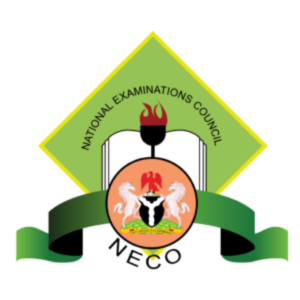With free NECO previous questions, you can ace your exams. Using previous exam questions allows you to become more comfortable with the exam format, identify your strengths and weaknesses, learn crucial ideas, improve time management, and raise your confidence. Access previous questions from various subjects to properly prepare for and excel in the NECO. Do you want to get a good score and get into your dream university? You’ve come to the right place. Below are NECO Biology Questions and Answers.

Biology NECO Questions and Answers
The questions below are not exactly 2023 NECO Biology questions and answers but likely NECO Biology repeated questions and answers.
These questions are strictly for practice. The 2023 NECO Biology expo will be posted on this page on the day of the NECO Biology examination. Keep checking and reloading this page for the answers.
Biology Paper II
Paper 1 will last for 1 hour. Attempt all questions from this section. Also, answer Paper 1 on your objective test answer sheet.
Note: Use HB pencil throughout.
1. Which of the following organisms carries out photosynthesis?
(a) Amoeba
(b)Euglena
(c) paramecium
(d) plasmodium
(e) Volvox
2. Which of the following cell organelles traps sunlight energy in plants?
(a)Chloroplast
(b) Endoplasmic reticulum
(c) Mitochondrion
(d) Ribosome
(e) Vacuole
3. The following conditions are necessary for photosynthesis except
(a)Carbon(iv)oxide.
(b)chlorophyll
(c) light energy
(d) oxygen
(e) water
4. The tissue which connects a muscle to a bone is known as____?
(a)cartilage
(b) muscle fiber
(c) tendon
(d) ligament
(e) connecting fibre
5. A fruit formed from a single flower having several free carpels is called___?
(a) multiple fruits
(b) dry dehiscent fruit
(c) simple fruit
(d) aggregate fruit
9. If the anthers of a flower mature before the stigma, the condition is termed?
(a) epigyne
(b) hypogyny
(c) protogyny
(d) protandry
(e) perigyny
10. An instrument used in measuring the speed of wind is called__?
(a)barometer
(b)wind gauge
(c) wind vane
(d) an anemometer
(e) a hydrometer
11. Spirogyra reproduces vegetatively by?
(a) spore production
(b) fragmentation
(c) multiple fission
(d) budding
(e) binary fission
12. Which of the following instruments is used to demonstrate the response of roots and shoots to gravity?
(a) Klinostat
(b) Manometer
(c) Porometer
(d) Potometer
(e) Photometer
13. Milk protein is hydrolyzed by____?
(a) renin
(b) amylase
(c) lipase
(d) lactase
(e) pepsin
14. The rate of transpiration of a leafy shoot would be highest under?
(a) damp, cold, still air
(b) damp, warm, moving air
(c) dry, warm, moving air
(d) dry, cold, moving air
(e) dry, warm, still air
15. What is the name of the respiratory organ of the crab?
(a) Tubules
(b) Trachea
(c) Spiracles
(d) Lungs
(e) Gills
16. The two types of human tapeworm can be distinguished by the presence or absence of?
(a) scolex
(b) hook
(c) head
(d) sucker
(e) proglottis
17. Which of these is not a digestive enzyme?
(a) bile
(b) lipase
(c) maltase
(d) pepsin
(e) ptyalin
18. In a bakery, yeast is added to flour to make bread rise. This is possible because yeast produces?
(a) alcohol
(b) oxygen
(c) carbon dioxide
(d) energy
(e) ethanol
Biology Paper III
Paper 3 will last for 1 hour
(2aii)
The muscle that contracts to cause the joint to straighten is called extension. When one muscle is contracted, the other muscle from the other pair is always elongated. The biceps and triceps muscles work together to allow bending and straightening of the arm.
(2bi)
(i) Baking of bread.
(ii) Formation of acid.
(iii) Formation of dairy products.
(2bii)
(i) Production of honey eg bees
(ii) Pollinating crops we use for food.
(iii) Some are scavengers and prevent decay.
(iv) Production of silk.
(v) Human food is spiked by cockroaches, ants and flies.
Read Also!!
- NECO Chemistry Questions and Answers.
- NECO Further Mathematics Questions and Answers.
- NECO CRS Questions and Answers.
- NECO Geography Questions and Answers.
- NECO Civic Education Questions and Answers.
2biii)
(i) Both have ribosomes.
(ii) Both has hybosomes.
(iii) Both has Nucleolus.
(iv) Both has Mitochondria and Golgi bodies.
4b)
TABULATE:
Living thing:
-They can move
-They reproduce
-They grow
-They respond to stimulus
-They excrete
Non living:
-Most do not move
-They do not reproduce
-They do not grow
-They do not respond to stimulus
-They do not excrete
4c)
-Large cylindrical centrum
-Large neural canal
-Short tranverse process
-Long neural spine

Leave a Reply